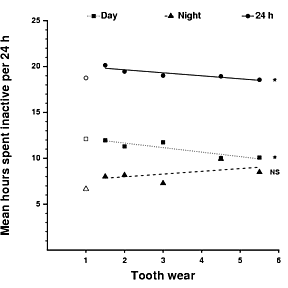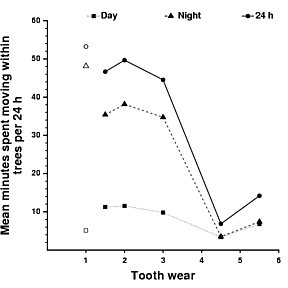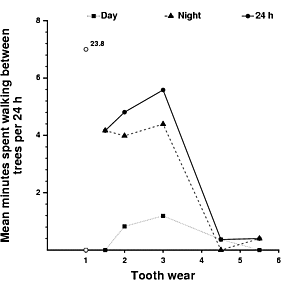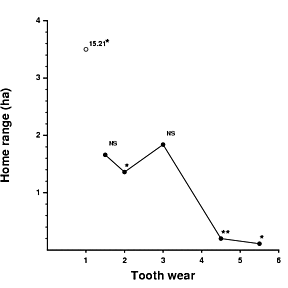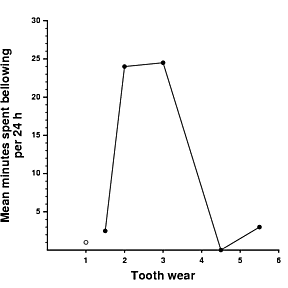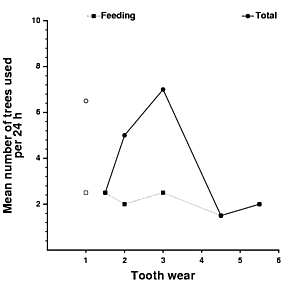Findings of koala research
The effects of Tooth wear
Feeding behaviour
Amongst adult male koalas, an increase in tooth wear was found to be associated with a significant increase in the average amount of time spent feeding, average number of leaves consumed and the average number of daily ingestive and merycism mastications. This suggests that koalas compensate for tooth wear by increasing food intake. Furthermore, there was a significant increase in the average number of ingestive mastications per leaf and average ingestive mastication rate, suggesting a greater investment in processing each leaf.
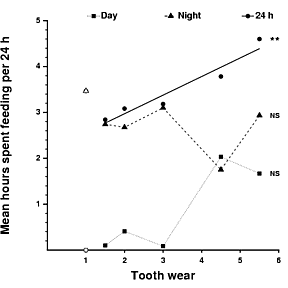
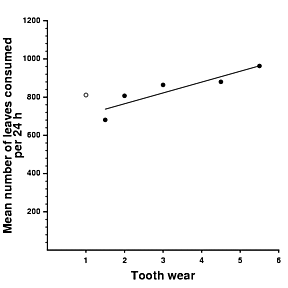
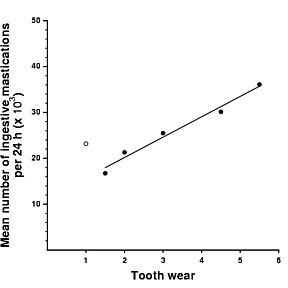
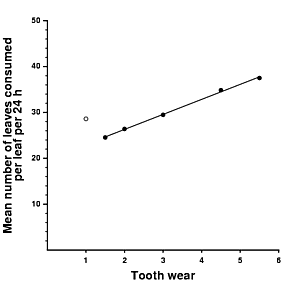
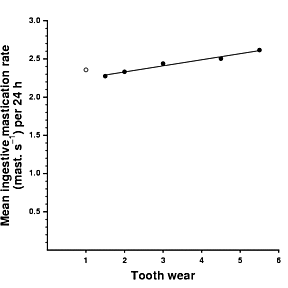
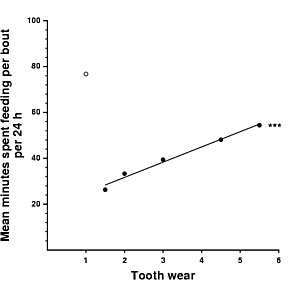
Activity patterns
Increased tooth wear was found to be associated with a significant decrease in the amount of time spent
sleeping and being inactive. Furthermore, compared to individuals with low degrees of tooth wear, individuals with high tooth wear were found to spend considerably less time moving within and between trees, and had home ranges an order of magnitude smaller. Hence, feeding compensations were found to come at the expense of other activities such as sociality and therefore have important consequences for reproductive output. High tooth wear individuals were also found to spend longer feeding per bout, and space feeding bouts out more evenly throughout a 24 h period, thereby exhibiting reduced degrees of nocturnality. The sub-adult was found to range over a disproportionately large area and spend a relatively large amount of time moving between trees, indicative of a dispersing individual. Moreover, the feeding behaviour and activity patterns of this individual were found to differ slightly from the adult trends and were perhaps affected by the extra energetic demands associated with growth and dispersal.
